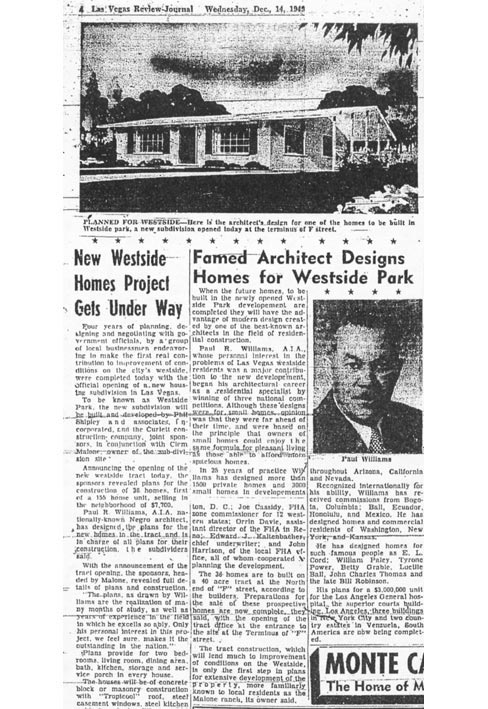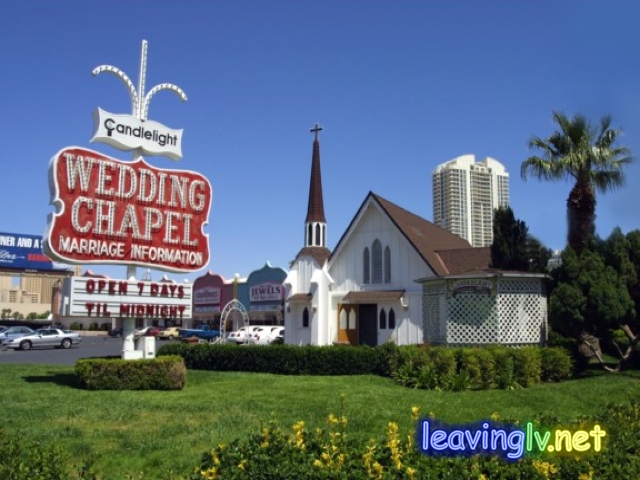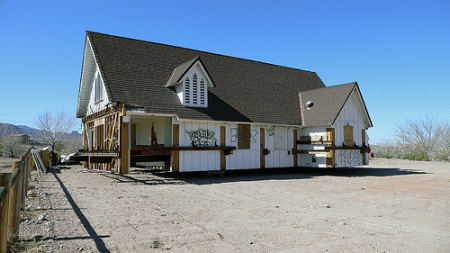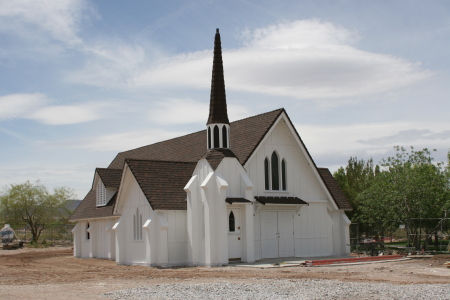It's official! Berkley Square, designed by mid-century modern architect, Paul Revere Williams, was the first subdivision to be built in Nevada by and for African-American residents of Las Vegas. It is now on the National Registry of Historic Places!
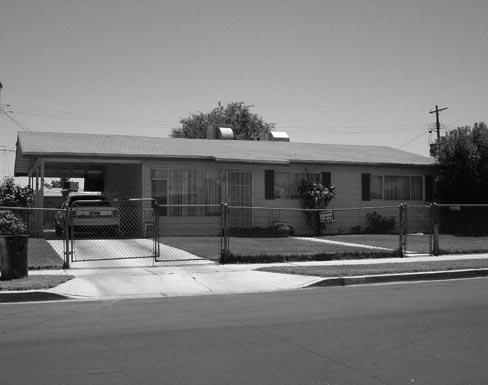
The historic Berkley Square Neighborhood, located in West Las Vegas, has been listed in the National Register of Historic Places. The Register, a National Park Service Program, is the nation’s official list of cultural resources worthy of recognition and preservation. The city of Las Vegas Planning & Development Department nominated the neighborhood on behalf of the Berkley Square residents after a consultant’s report found that the neighborhood met the National Register criteria for historic district designation.
“I am thrilled that the National Park Service has recognized this important and historic neighborhood. This is truly an incredible honor for our community,” Ward 5 Councilman Ricki Y. Barlow said.
The Berkley Square Historic District is located about one and one-half miles from downtown Las Vegas near Owens Avenue and D Street, and is bound by Byrnes and Leonard avenues on the north and south, respectively, and G and D Streets on the west and east, respectively.
The district includes 148 homes constructed in 1954-55 in the Contemporary Ranch style with two models that varied by roof type, porch overhang and façade finishes and fenestration. The neighborhood was designed according to Federal Housing Administration standards of the day, showing concern for traffic and pedestrian safety with limited access points and sidewalks separated from the streets by a grass strip.
Berkley Square is the first subdivision to be built in Nevada by and for African-American residents of Las Vegas. It was designed in 1949 by Paul R. Williams, an internationally-known African-American architect from Los Angeles who made great strides for his race in the profession.
The developers and builders comprise an A-list of prominent African-American community activists and civic leaders, including financier Thomas L. Berkley, an attorney, media owner, developer and civil rights advocate from Oakland, Calif. It was also financed by Edward A. Freeman and J. J. Byrnes of Los Angeles. The developer was Leonard A. Wilson of Las Vegas. Construction was supervised by Harry L. Wyatt of the Las Vegas firm Burke and Wyatt. Massie L. Kennard, a Las Vegas civil rights leader, was the real estate agent.
Berkley Square contributed to improving living conditions for the city’s African-American community, and represented the advances that were being made as a result of local activism in the community in the late 1940s and early 1950s. It is additionally representative of the massive building boom that took place in Las Vegas and across the country in the post-war era, and retains good integrity as a residential suburb of that time.
